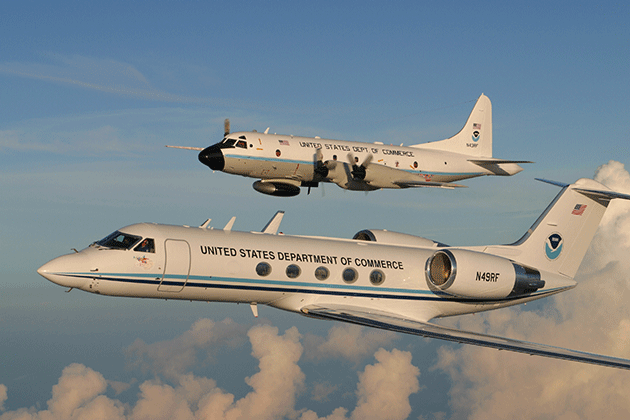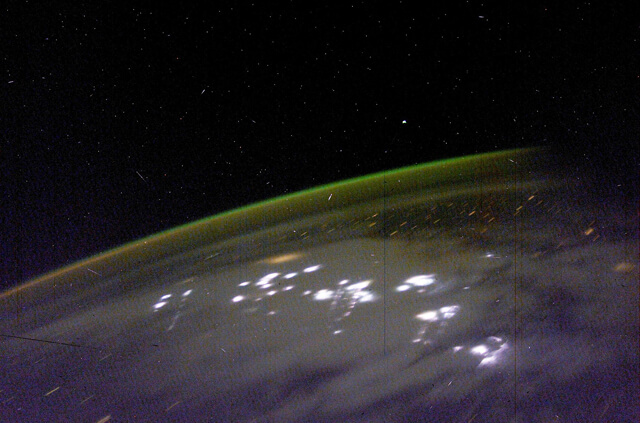How is an eagle like an airplane?
Well, they both fly. But as high and fast as the plane may fly, the eagle has something the airplane doesn't. The eagle has a wide view of his whole world and acute eyesight. He can see everything he needs to see, both in the air and on the ground, for as far as he plans to fly.

NOAA Aircraft in flight. Credit: NOAA
Not so the airplane. Airplanes have radar that can detect turbulence and other planes a few miles out. But when a plane is going 500 miles per hour, it covers a long distance in just a few seconds—very little time to avoid hazards. And there are some hazards that planes don't see—like fine, powdery volcanic ash floating in the air. As you know from "Keeping an Eye on Volcanic Ash," this stuff is very bad for airplanes.
Now, how is an eagle like the satellites in the GOES-R series? Like the eagle, satellites in the GOES-R series have a very wide view of the world, and excellent eyesight. First, the satellite is in geostationary orbit, so high above the equator that the satellite's imager—its "eyes"—can see Earth as a whole disk. Now that's a birds' eye view.
What's more, the new R series of Geostationary Operational Environmental Satellites (GOES) have very advanced sensor technology. Using its new imager, plus new techniques for processing its data, it will be able to warn of fine volcanic ash floating in the air. This information will help aviation agencies to steer pilots around them.
Its imager data is also used to detect high-altitude updrafts shooting over the tops of storm clouds that could create hazardous turbulence for aircraft.

This image of lightning and the Aurora Australis (Southern Lights) was taken from the International Space Station.
The GOES-R series also detects and maps lightning. Data from its Lightning Mapper will show where the lightning storms are happening across the entire U.S. at once. Lightning is a very serious aviation hazard!




